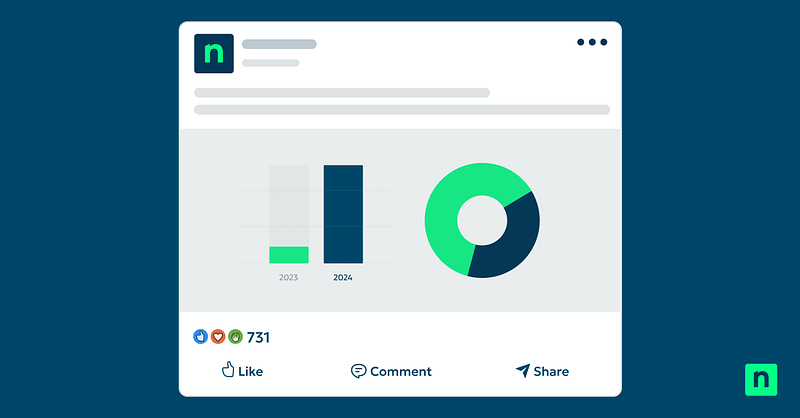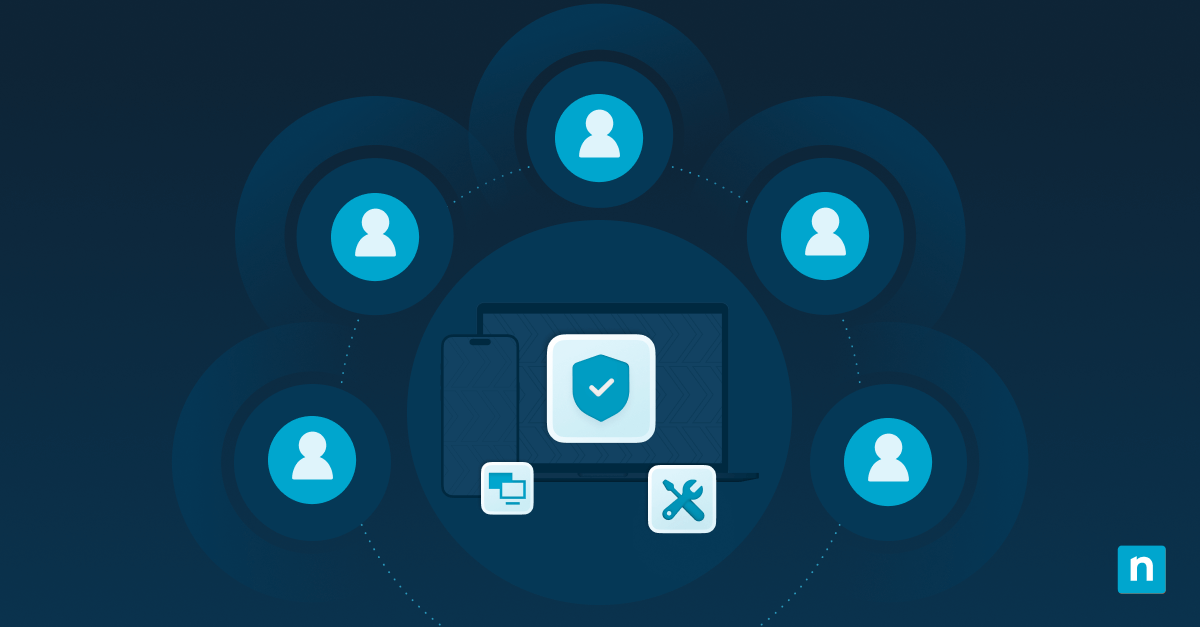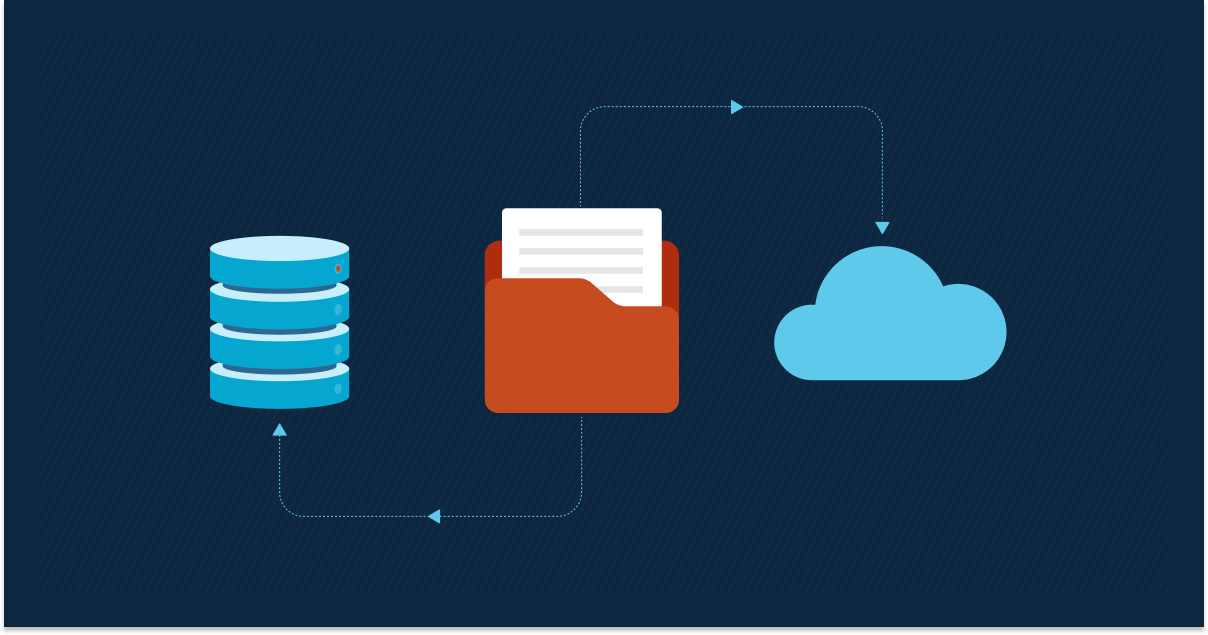Key Points
MSP Playbook for Organic Social Media Marketing
- Start with strategy: Define your ideal customer profile, positioning, and measurable outcomes before posting anything.
- Focus on proof, not promotion: Show real work, like dashboards, checklists, and lessons learned, so prospects see your expertise in action.
- Pick channels you can sustain: Prioritize LinkedIn and YouTube; add a third only if you can show up weekly.
- Build a weekly rhythm: Consistency compounds. Protect time for posts, videos, and follow-up engagement.
- Empower your experts: Capture insights from engineers and SMEs through short screen-shares or Q&A sessions.
- Lead with credibility: Write like a helpful engineer, not a marketer. Respect and clarity earn trust.
- Measure what matters: Track engagement quality, website behavior, and sales signals. Don’t get lost on vanity metrics.
- Iterate every 90 days: Review results, refine cadence, and scale what drives pipeline.
- Trust compounds over time: Generosity and consistency on social build relationships that later convert into opportunities.
If you lead an MSP, organic social media can feel slow and uncertain . It doesn’t deliver the clear metrics or immediate response you get from the instant feedback of ads, and the algorithms seem to change overnight. Yet the MSPs that win long term, use social media strategically to shape perception, warm buyers before outreach, and turn customers into advocates.
To build that kind of lasting advantage, we’ve put together a complete, modern guide to navigate the world of social media for MSPs.
The role of social media’s job in an MSP’s go-to-market strategy
Don’t think of organic social media as your billboards or one-way promotional materials. Maximize these social platforms by actively inviting engagement and demonstrating your expertise.
Used well, it shortens sales cycles, improves response rates on outbound, grows search demand for your brand, and keeps customers engaged between renewals. Treat it like an operating system that fuels your entire motion: website, email, webinars, events, partner programs, and PR.
To help you find the right starting point, the table below summarizes each section of this guide: what it covers, when to begin there, and who it’s best suited for. Use it as your roadmap, so you can start where your team is today, not where you think you should be.
NinjaOne offers integrated tools that can measure and scale your MSP’s presence.
| Strategy | Focus | Who Is It For? |
| 1. Foundation and positioning | Establish ICP, positioning, and outcomes | Start here if your MSP hasn’t clearly defined its target market, value proof, or buyer outcomes. |
| 2. Channels and content architecture | Choose the right platforms and define your content pillars | Check this out if you’re unsure where to post or what themes to build content around. |
| 3. Execution and rhythm | Build weekly operating habits and team cadence | Move to this section if you struggle with consistency or lack a repeatable posting process. |
| 4. Building credibility and community | Activate SMEs, advocates, and partner voices | Explore ideas for expanding your reach and trust through real people and partnerships. |
| 5. Optimization and measurement | Govern, measure, and scale responsibly | Tips for those already posting but unsure what’s working or how to improve. |
| 6. Rollout and iteration | Launch, refine, and sustain the system | Jump in if you’re ready to operationalize, measure ROI, or scale social into your GTM motion. |
Each strategy builds on the one before it, but you can also jump in wherever your team’s current maturity and goals align best.
1. Foundation and positioning
Strong social results start with clear market focus and positioning. Before committing to a full-on campaign, you should know exactly who you serve, what outcomes you deliver, and how to prove it.
Strategy first: ICP, positioning, and outcomes
Start with the market you can actually win. Define the industries, company sizes, and geographies where your service is a clear fit. Identify three measurable outcomes that buyers will pay for in a simple phrase:
“We help [industry/size] companies cut [pain] and meet [control/outcome] with a predictable, rightsized managed IT program.”
Everything you post should reinforce this positioning.
Tie those outcomes to visible proof: fewer tickets per endpoint, faster patch rollback, verified insurer compliance, cleaner audits, lower downtime. Organic social content should make those outcomes tangible in simple language.
Personas and the buying committee
MSP deals typically involve an IT manager, an operations lead, and a CFO or owner. Each of them cares about something different or specific. nAppeal to each decision role with pain points, desired outcomes, and the specific questions they ask during buying.
Use dedicated landing pages or targeted campaigns when planning content. If a post does not answer a real question for one of these people, cut it.
2. Channels and content architecture
A clear structure helps your message stay consistent across channels. To communicate your content effectively, you will need strong pillars, sustainable content, and grounded proof of your work.
Channel choices that fit MSP reality
You do not need every platform. Pick two to master and a third to support.
LinkedIn is your primary B2B social marketing platform.. Your buyers are there, titles are visible, and trust is built through people. Company pages matter, but people drive reach.
Use the company page to anchor themes, share milestones, and highlight customer outcomes. Then, publish from personal profiles to add perspective, tell stories, and engage directly with buyer conversations. When both are coordinated, your brand shows up as credible, consistent, and human.
YouTube is your reference library. Short how-to guides and customer walkthroughs build durable trust and rank in search. Many prospects will watch quietly before ever speaking to sales.
A third channel depends on your niche and resources. Git-adjacent audiences may reward technical posts on X. Local SMB audiences may respond inside Facebook groups. Regulated industries sometimes have active forums and subreddits. Choose a third only if you can show up regularly.
Meet your audience where they are and show your expertise through actual results.
→ Turn NinjaOne dashboards into shareable proof of your work
Content architecture: pillars, series, and proof
Create three to five pillars tied to your positioning. Here are some examples:
- Security readiness: Anticipating, preventing, and responding to evolving cyber threats.
- Endpoint reliability: Keeping devices healthy, updated, and consistently performing.
- Compliance for insurers: Demonstrating compliance to various IT standards.
- IT cost clarity: Insights into IT spending to optimize budgets and justify investments.
- Employee productivity: Empowering teams with stable, secure, and efficient technology that supports their work.
Under each pillar, plan recurring series, so your audience knows what to expect. A series might be “Monday Minutes” for short tips, “Fix in 5” for quick demos, or “Ask an Engineer” for candid Q&A. These campaigns will give you momentum and create opportunities to repurpose quality output.
IT reporting tools provide efficient workflows for consolidating data that can showcase an MSP’s value more effectively.
Lest you forget, proof beats promotion. Share real artifacts from your work: redacted rollback plans, before-and-after dashboards, restore test checklists, outage postmortem lessons, and onboarding timelines. Replace vague claims with small, specific, and real examples. Prospects remember specifics.
3. Execution and rhythm
Consistency can turn good ideas into enduring social media presence. This section helps you build a weekly operating cadence that keeps your content engine steady, sustainable, and aligned with real buyer needs.
Editorial rhythm you can sustain
Decide what you will do every week, and protect it on the calendar. Start with a simple rhythm that you can sustain, such as:
- Two LinkedIn posts from the company page that anchor the week.
- Three to four LinkedIn posts from executives and SMEs that build reach and trust.
- One YouTube video that answers a real question buyers ask.
- One email that recaps the best content and links to your site.
Keep posts short and useful. One idea per post. One clear takeaway. One link only when you genuinely want a click. When engagement drops, it is usually because posts try to do too much at once.
Tone and voice
Write like a helpful engineer explaining a fix to a busy operator. Short sentences. Concrete words. Avoid buzzwords. Explain the why behind your advice. Never mock users for mistakes. Credibility comes from respect and clarity.
4. Building credibility and community
This section covers how to turn your experts, customers, and partners into authentic advocates, and how regular and steady participation builds lasting communities.
Thought leadership that helps
Thought leadership is more than a series of hot takes. It is grounded on transparency or showing your decision process in the open.
Explain how you evaluate new tools. Share criteria you use to approve patches. Walk through a vendor consolidation decision. Map your restore testing cadence and what “done” looks like. These posts earn bookmarks and private shares, which lead to quiet DMs and calendar invites.
SME activation without chaos
Your best content often rests in an engineer’s head. Give them a lightweight path to contribute. Record 10-minute screenshares where they talk through a problem and its fix. Transcribe, clean up the language, and publish under their name with their final review.
Rotate contributors to prevent burn out, recognize them publicly for their input, and quietly iron out the process each round to make it iterative and more engaging for the team.
Employee advocacy that sales can feel
Do not force connection sprees. Equip employees with context and ready-to-post copy that aligns with their roles.
Sales should share posts that start conversations and highlight innovation and customer benefits. Engineers should share fixes and lessons. Leadership should share directions and outcomes. Track contribution but reward quality and consistency more than raw social media metrics.
When advocacy is optional and useful, participation climbs organically.
Partners, influencers, and customer voices
MSPs often sell within ecosystems. Turn that to your advantage.
Cocreate checklists with security vendors. Invite insurers or auditors to join a short video about controls. Ask a friendly customer to walk through one improvement you made and the results they have seen. Keep these segments short and focused on a single change and outcome. The more specific, the more credible.
💡 Tip: Check out NinjaOne’s Customer Stories to see how community input can shape your own story.
Community: groups, comments, and DMs
Most of the value in social channels happen off the post.
For starters, reply to comments with substance. Ask one clarifying question and share one actionable tip .Join relevant groups and contribute answers without links.
As you gain more equity in the community, encourage DMs by ending posts with a simple “If you want the template, message me and I’ll send it.” Guard your time with a simple rule: fifteen minutes after each post to respond while the thread is active.
5. Optimization and measurement
Improvement can be a burden without stability. This section shows how to govern your brand voice, track meaningful metrics, and adjust based on data instead of gut feel.
Social listening and topic selection
Listen in for the questions that your market repeats.
Use search on LinkedIn and YouTube to spot patterns. Keep a running list of phrases buyers use when they describe problems: backup tests, rollback steps, insurer controls, MFA exceptions, onboarding timelines.
Build content around those talking points and mirror the language of your audience. When a topic spikes in support tickets, make it a post. Your best editorial calendar is your help desk.
Visual standards that scale
You do not need elaborate design. You need consistency and clarity. Use a simple system:
- Start with a single style forone title cards, diagrams, and checklist.
- Keep margin space generous so text reads on mobile.
- Use captions on all videos.
- Put diagrams and checklists on your site as images so sales can use them in email.
Let the visual library becomes an internal tool as much as a public asset.
YouTube that earns trust
Plan videos around buyer questions and project milestones.
Here, a tight format helps state the problem, show the environment, demonstrate the fix, and summarize what to check next time.
Keep most videos under five minutes so people can watch during a coffee break. Whenever available, link to a plain English companion post on your site.
Over time, create playlists that match stages of your engagement: assessment, stabilization, hardening, and quarterly reviews. When sales secures an audience with a new prospect, send the relevant playlist before the first call.
LinkedIn that reaches beyond your page
Company pages rarely carry social media engagement on their own.
Teach two or three executives how to post like practitioners. Have them publish personal takes on the same weekly themes, each in their own voice.
When targeting specific segments, tag customers only when the value to them is obvious and clear. Encourage leadership to comment on buyers’ posts with helpful context, not sales pitches. The goal is to show up in the right feeds often enough that a cold outbound email feels familiar, not intrusive.
Lead capture without ads
You do not need a gated eBook to earn leads. Offer practical, light-lift assets with immediate value: a restore test checklist, an onboarding timeline, or a control mapping worksheet.
Instead of forcing leads, make the free resources widely accessible and offer a downloadable version available by email with a clear privacy promise. Add a simple “get help implementing this” CTA. People who need help will ask.
Events, webinars, and live sessions
Run short, focused sessions that fix a problem in thirty minutes.
To maximize engagement, announce once on the company page, once on executive profiles, and once in the reminder email.
For the presentation, keep slides minimal and do the work live. Record and chop into clips. The replay becomes a blog post and a YouTube asset. The clips fuel LinkedIn for two weeks. Repeat monthly with a new, concrete problem.
Governance, brand safety, and crisis handling
Write three one-page documents: a voice and style guide, a visual guide, and a moderation policy. Keep them simple.
Define who approves what and set clear timelines. When incidents happen, move fast, stick to facts, and own the fix. If a security event touches customers, publish a short holding statement quickly, then a clear postmortem once facts are confirmed. Consistency builds trust.
Measurements that guides decisions
Pick a small set of metrics that maps to business value.
On socials: Track the reach generated by key titles or campaigns. Take note of the meaningful engagement such as saves, replies, and qualified comments.
On website: Watch out for engaged sessions, time on page for help content, and newsletter signups.
Within sales: Observe meeting acceptance rate and sales cycle length for leads that engage with social content.
Review weekly for activity and monthly for direction. Adjust only a few things at a time so you can tell what worked.
Prove value through narrative-driven content and let visibility drive growth.
6. Rollout and iteration
At this stage, you will turn the framework into a 90-day rollout plan, refine what works, and scale momentum across all channels.
Content operations and workflow
Run a simple weekly cadence.
- Monday: confirm topics and owners.
- Tuesday: draft copy and scripts.
- Wednesday: record and design.
- Thursday: schedule, and prep engagement prompts.
- Friday: publish the anchor post and assign responses.
Keep assets in a shared folder with clear and consistent naming conventions so anyone can find them. Maintain a single source of truth for your content backlog, status, and links. The process should be boring. Boring processes ship.
Repurposing that does not feel recycled
Start with the main asset. A 5-minute video can become a short checklist, a diagram, a thread of tips, and three clips. Change the angle for each persona rather than repeating the same lines. Use different openings so repeat viewers still find something new. Space variants over weeks so the feed does not feel repetitive.
SEO and social working together
Use social to test headlines and hooks. The lines that earn saves and comments are often the lines that become your H1s.
When a topic performs in socials, convert it into a durable, search-friendly guide on your site. Link from the guide to your checklists and videos. Over time, search will bring steady visitors to the guide, and social media will keep it visible when the market shifts.
💡 Tip: Watch this MSP Marketing Guide video for a for a broader look at strategies that drive awareness, leads, and long-term growth.
Tooling that helps without taking over
Keep the stack light and stay agile. A scheduler, a design tool, a captioning tool, and a transcript tool are enough. Add social listening when the volume justifies it.
Integrate with your CRM so sales can see when a prospect engaged with a key post. Avoid tools that turn every post into a template. The best performing posts still sound human.
90-day rollout plan
Give yourself three months to build the machine. In month one, lock positioning, pillars, and series. Establish your visual standards, templates, and folders.
In month two, publish on a fixed rhythm, capture SME time, and release your first short webinar. Audit the basics on your site: fast pages, clear CTAs, and a simple newsletter signup.
As you enter the third month, tighten the strategies based on what performed, expand SME voices, and launch a customer story series. End the quarter with a simple report that ties activity to meetings set, cycle time, and influenced pipeline. Share it with leadership so they see the compounding effect.
Troubleshooting quick wins
If engagement is low, narrow the topic and make it more concrete.
For instance, if comments are shallow, ask a question that only a practitioner could answer.
Running out of content ideas? Dive into your ticket queue and turn a solved problem into content. If your team is inconsistent, reduce the number of series and shorten the production cycle. If the brand feels flat, bring real engineers on camera and let them explain how they successfully resolved a difficult issue.
Sustaining momentum through trust and consistency
Organic social rewards consistency, clarity, and generosity. Show your work. Share what you learn. Make the buyers’ jobs easier even if they never hire you. Over time, that posture turns into trust, and trust turns into pipeline when it matters most.








